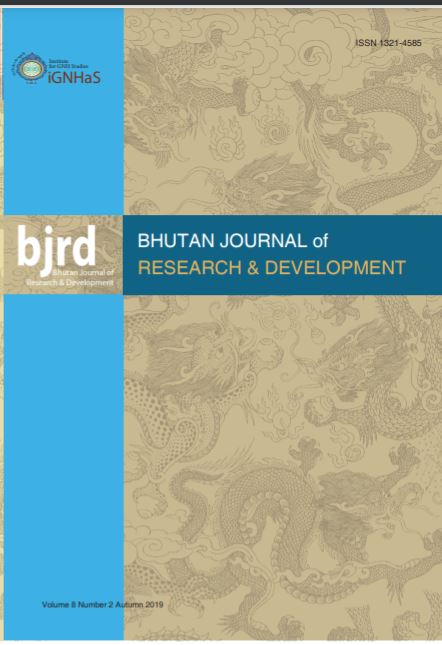Identifying Critical Thinking Skills of 2nd Year. Bachelor of Language and Literature students at Taktse, Trongsa
Keywords:
Critical thinking, Cornell Critical Thinking Test, Pedagogical practices, Induction, Credibility, Deduction and Assumption, Six Thinking HatsAbstract
This research study aimed to focus on writing critically in any kind of essay or short responses of the second year Bachelor of Language and Literature in an academic writing. A preliminary survey was carried out with five language teachers; to identify their understanding and beliefs on teaching and learning critically. Critical thinking skill is one of the tools that are required even in the job market or any kind of research skills. This research tested students’ (n=55) critical thinking ability through the Cornell Critical Thinking Tests CCTT Level X (2005). The findings indicated that the critical thinking ability of students was 46%≥ 54% lower compared to the standard level of tertiary education. In order to successfully prepare students for the workplace, a solid foundation in subject matter knowledge, critical thinking and effective communication skills should be well established. Comparably, thinking and writing are compatible, synergistic processes. As we teach students how to write, we are teaching them how to think. This research discusses as ways forward to integrate both principles and pedagogical practices in both small and large classroom to develop students’ critical thinking skills.Downloads
Published
How to Cite
Issue
Section
License
All articles published in BJRD are registered under Creative Commons Attribution 4.0 International License unless otherwise mentioned. BJRD allows unrestricted use of articles in any medium, reproduction and distribution by providing adequate credit to the authors and the source of publication.



